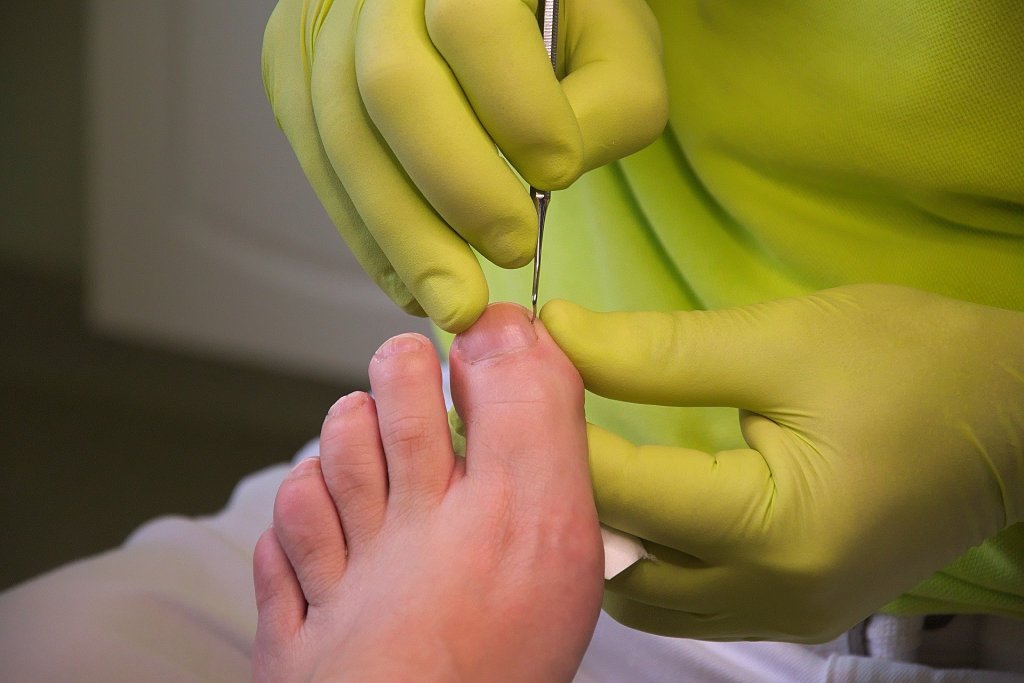10 Worthy Reasons to Visit Your Podiatrist
While foot and ankle problems can be caused by chronic conditions such as arthritis or diabetes, did you know that even everyday situations, such as overuse or ill-fitting footwear, can lead to temporary acute pain. A podiatrist will likely give you a quicker diagnosis and treatment recommendations. Foot and ankle surgeons offer a wide range of medical care for foot, ankle and leg problems. They diagnose and treat illnesses and perform surgery. Here are some conditions in which a podiatrist can help you get back on your feet.
#1. Diabetes
Diabetes dramatically increases the risk of foot problems. These problems can range from dry skin to severe infections. If you have diabetes, you should have your feet examined by a doctor or podiatrist at least once a year. Studies show that having a podiatric physician on your health care team reduces the risk of diabetic amputations by more than 50%.
#2. Stubborn Ingrown Toenail
When a toenail grows into the skin, the ingrown toenail can cause an infection. Ingrown toenails most often affect the big toe. If a toenail is very red or has significant drainage, see a chiropodist to treat it. In some cases, the doctor will remove part of the nail. Your doctor will prescribe medication if the area is infected.
#3. Athlete’s Foot
The fungal infection known as athlete’s foot can make the skin between the toes look scaly and itchy. An over-the-counter antifungal cream can help. But if the condition does not seem to improve after a few weeks, see a podiatrist. Cream-based or oral prescription medications are often more effective. Your doctor will also look for signs of a bacterial infection, which requires antibiotics.
#4. You’re Starting to Run Regularly
Runners are particularly prone to pain, such as shin splints. A podiatrist can assess your body and feet to identify potential problems and recommend strategies to avoid them. He or she can also recommend the best type of athletic shoe for your foot.
#5. Heel Pain
The causes of heel pain are multiple. You may have a bony growth on the heel, called a heel spur. Or one of the tendons attached to the heel may be inflamed. If you have persistent heel pain, see a podiatrist for a diagnosis. He or she will examine the foot and may take x-rays. A correct diagnosis is the first step in developing a treatment plan.
#6. Fracture, Strain or Sprain
Foot and ankle surgeons are highly skilled in the treatment of sprains, strains and fractures of the foot or ankle. They can diagnose your injury and offer treatment. The foot and ankle surgeon can also create a soft cast to help the area heal. Swelling, difficulty walking, redness and increasing pain from an injury are all reasons to see a podiatrist.
#7. Painful Bunion
A bump at the base of the big toe is known as an onion. It happens when the bone or joint of the big toe is out of place. Bunions tend to get worse if left untreated. A podiatric physician may suggest treatments such as medication, tape, or padding. Surgery is also an alternative in severe cases.
#8. Joint Pain in Your Feet or Ankles
Arthritis is one of the most common conditions affecting Americans. If the joints in your feet are often swollen, red, stiff or tender, see a podiatrist. Arthritis can change the way your feet function and lead to disability. A podiatrist can suggest treatments that can keep your joints healthy and make your day easier.
#9. Annoying Callus or Corn
Corns and calluses are among the most common reasons people consult a foot and ankle surgeon. These areas of accumulated skin can be painful if they become too thick. The foot and ankle surgeon may recommend cortisone injections to reduce the pain. Your doctor may also reduce their size with a surgical blade. The procedure is not painful because the skin is dead.
#10. Foot Surgery
Surgery is often the last treatment that a podiatric physician recommends for many foot conditions. However, if you need it, foot and ankle surgeons perform surgery on the foot and ankle. Bunions, recurring ingrown toenails and broken bones are all problems that may require surgery.
If any of the problems listed above sounds like you, you may be an ideal candidate for podiatry! Make an appointment with Wyndhamvale Health Care! The staff is made up of highly trained practitioners. They will not only give you realistic and professional advice but will also work with you to develop a personalized treatment plan tailored to your needs and goals. You’ll be on track to living a pain-free life in no time!







Thank you so much for explaining what a bunion is and how a podiatrist can help remove it. I’d noticed that my toes were developing a growing pain recently, and when I had the chance to inspect it for myself, there was a moderately sized bump on one of them that I had no idea where it came from. Now that I know how serious this is, I’ll seek some professional help from a podiatrist in the area and have it removed promptly.
Wow, I had no idea that podiatrists are experts that can diagnose and treat the cause of your heel pain. My uncle owns a farm, and recently his foot has been aching each time he walks around his home. Hopefully, a visit from one of these medical experts can treat this pain so that he can work again.